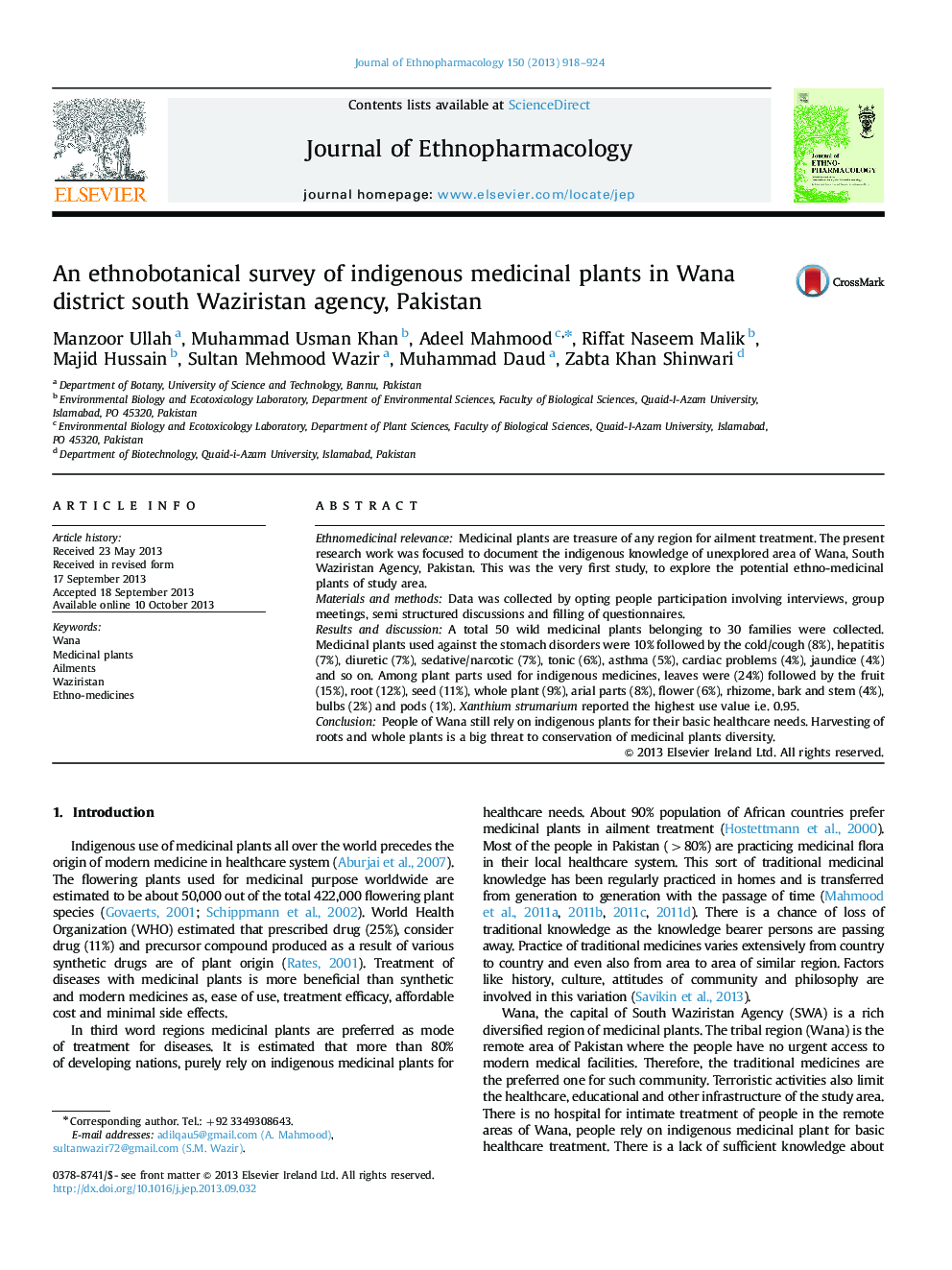| Article ID | Journal | Published Year | Pages | File Type |
|---|---|---|---|---|
| 2545331 | Journal of Ethnopharmacology | 2013 | 7 Pages |
Ethnomedicinal relevanceMedicinal plants are treasure of any region for ailment treatment. The present research work was focused to document the indigenous knowledge of unexplored area of Wana, South Waziristan Agency, Pakistan. This was the very first study, to explore the potential ethno-medicinal plants of study area.Materials and methodsData was collected by opting people participation involving interviews, group meetings, semi structured discussions and filling of questionnaires.Results and discussionA total 50 wild medicinal plants belonging to 30 families were collected. Medicinal plants used against the stomach disorders were 10% followed by the cold/cough (8%), hepatitis (7%), diuretic (7%), sedative/narcotic (7%), tonic (6%), asthma (5%), cardiac problems (4%), jaundice (4%) and so on. Among plant parts used for indigenous medicines, leaves were (24%) followed by the fruit (15%), root (12%), seed (11%), whole plant (9%), arial parts (8%), flower (6%), rhizome, bark and stem (4%), bulbs (2%) and pods (1%). Xanthium strumarium reported the highest use value i.e. 0.95.ConclusionPeople of Wana still rely on indigenous plants for their basic healthcare needs. Harvesting of roots and whole plants is a big threat to conservation of medicinal plants diversity.
Graphcal abstractFigure optionsDownload full-size imageDownload high-quality image (132 K)Download as PowerPoint slide
